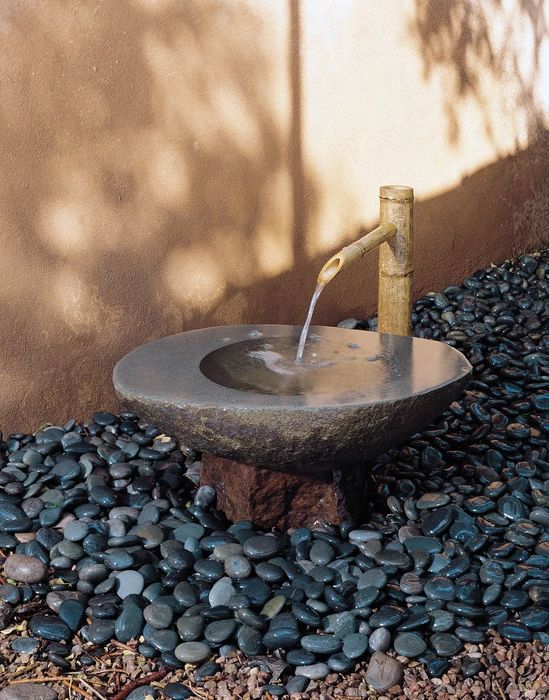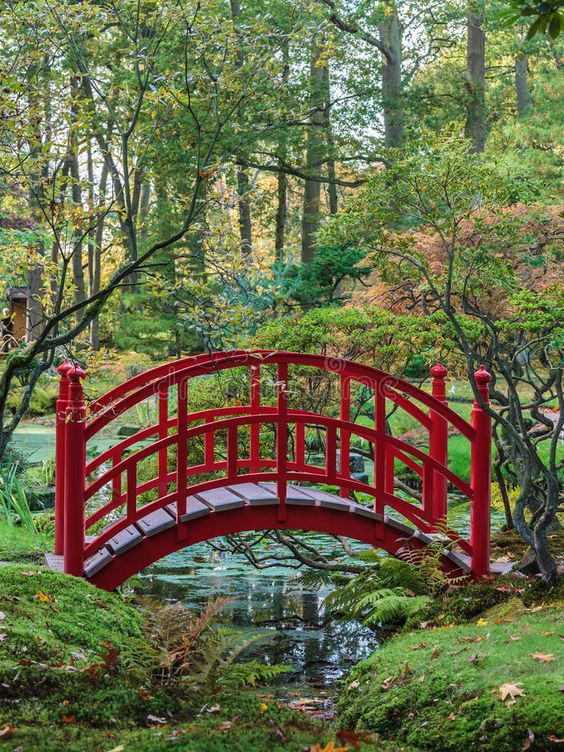Jordlinghome.com – The Japanese garden is one of the most popular oriental landscaping styles. The perfect and meaningful decoration combine with artistic craftmanship giving serious hits across the globe. If you are looking for relaxing outdoor decor, then this design is suits you the most. Establish the perfect curated Japanese garden structure in our outdoor space is such a relaxing retreat! In this writing, we will be sharing with you a complete guide about oriental garden structure design. In addition, this guide is completed with the important elements that construct it! So, don’t miss any points to make a dream relaxing outdoor retreat come true!
A Brief History Of Japanese garden
There is no doubt that the Japanese garden is artfully made that brings sophistication and satisfaction. Dating back to history, it was influenced by Chinese garden design when the Nara period reign around the 7th century. The landscaping style that showing stream, bridge, plants, and rock combine all together to create a relaxing outdoor ambiance. It is being said, along with Buddhism that teaches simplicity and creating a relaxing meditation place. It transforms into the perfection of a relaxing garden!
Combining water, rocks, sands, plants as the main element to construct the Japanese landscaping idea. Through the times, the garden is developed and renewed. Adding Japanese architecture design to the garden absolutely improves the look and bold style! In addition, the lantern, pagodas, water basin joins the decoration. Now, we can see how impactful artfully made oriental garden is!
Element of water in Japanese garden structure
Talking about the important element in a Japanese garden, water take an integral part. Its substance is pure and takes an important part in the wheel of life. We all need water to survive, drinking, washing, have a shower, to run the industry. We cannot doubt it’s the source of our life.
Promoting natural landscaping style, water is the essential element that should be included in the landscaping project. The presence of water promotes a relaxing ambiance. It could be transformed into a pond or fountain. It does not matter if it’s small or large water feature is a must in Japanese garden landscaping! Moreover, the sound of water gives an impactful natural ambiance and aesthetic decor!
Aesthetic Japanese rock garden
Another important element in creating an aesthetic Japanese landscaping structure is rock. In their traditional mythology rocks symbolizes the mountain. It is part of massive landscaping that exists on Earth. As we alluded to earlier, the Japanese garden style is made from natural scenery. Where the water, rocks, sands, plants all combine together creating a balance and perfect landscaping. For the complementary, the sand and gravel join the decoration. The gravel can refers to the flows of a river or the ocean. So, we used to see this landscaping with gravel. This rock garden landscaping idea giving an aesthetic look.
Make it lush with green plants
Another essential element that constructs the Japanese garden structure is the plant. The greeneries and colorful plants infuse the liveliness in the garden. We can add some Japanese shade plants such as Hakonechloa, Peones, Black pine, etc. When the lush greeneries meets water feature and natural rock landscaping. It gives an actual relaxing feel!
In fact, the greeneries help to purify the air, so growing and investing them in our garden can make quality air to breathe. Moreover, green is the color of nature which is why it will successfully creating a relaxing ambiance. There are so many advantages to growing plants on our property. So, don’t hesitate to include them in the landscaping project!
Include tea house in the garden
Another point that makes the Japanese landscaping is quite distinctive to others is presenting a tea house. It is the place to enjoy green tea (matcha). Besides that, its purpose is also for welcoming the guest and for sure the perfect place for hanging out to enjoy the garden view! The Japanese tea house is similar to their house architecture characteristic. It is a simple and traditional design with wood. For the interior design, we can see there is only functional furniture is added for such as the tea table, floor pillow cushions and that’s it. From this, we can learn that traditional Japanese home is designed in minimalist and functional decor. It helps us to create an airy space inside and the less busy interior design successfully creating a calming ambiance inside!
Japanese stone lantern
Another ornate decoration in a Japanese garden is adding the stone lantern. It is hand-carved and usually creates a pagoda shape. The presence of stone pagodas enhances the aesthetic garden. Moreover, when the sun goes down, there is a candle put inside a Japanese lantern, it provides subtle light which turns the gloomy night into a comfortable look. It is usually put on the corner of the garden and also the tea house.
The bridge in a Japanese garden
Have you ever see there is a red bridge in a traditional Japanese garden? It is one of the important parts of the landscaping style. The bridge symbolizes the journey between planes and worlds. It gives access to our way to discover another part of this world. Connecting one place to another, so it is a meaningful feature we can find in the garden. The red bridge color is quite important in their culture that represents transformation and wisdom. In addition, red is attractive and encourages color psychology, and in Zen philosophy, red can protect the soul from negative things so then the people who walk through the bridge are safe. We can make this kind of bridge from wood or brick material.
Conclusion
One of the most popular and artfully well-designed oriental garden styles. Japanese gardens hold an impactful and meaningful landscaping design among others. We can identify the structured garden that showcasing dry and wet garden polished perfectly. The essential of the wet garden transform by the pond with the bridge landscaping, where the dry garden transforms into the rock garden landscaping, featuring rock, pebble, and sand that imitate natural landscape.
We have to conclude that the Japanese garden structure divides into two parts that are wet and dry landscaping. The moss, large water feature, and bridge can represent the wet garden style. While the rock landscaping represents the dry garden style. In addition, there is a tea house added that showcases Japanese architecture style.
There are there three important elements that construct structures. They are water, rocks, and plants. These substantial materials are the most important thing to create an aesthetic garden. We hope you enjoy the brief history behind a wonderful Japanese garden and learning about the elements that construct its design!







